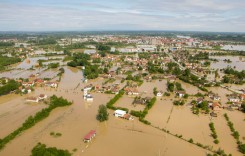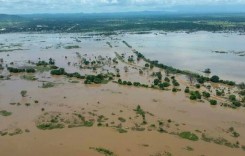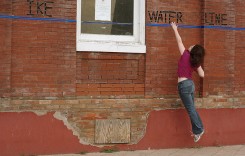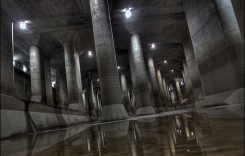As part of our series of articles on flood tunnels, below we take a look at the Metropolitan Area Outer Underground Discharge Channel, also known as the G-cans project, in Tokyo, Japan.
Flood tunnels are an important part of flood and storm water management system. They are used where space is limited – often in urbanised areas such as Tokyo, or in Kualur Lumpur (see our previous article on the SMART tunnel here).
One of the largest flood tunnel and storage tank systems is found on the northern outskirts of Tokyo, Japan. The Metropolitan Area Outer Underground Discharge Channel, also known as the G-cans project commenced in 1993 and the project was fully completed in 2006, at a cost of US$2.6bn.

The Tone, Are and Edo Rivers had been terrorizing the people of greater Tokyo for generations with their periodic monsoon-season flooding, culminating in Typhoon Mireilles in September 1991, the worst storm to strike Japan in 30 years. 30 000 homes and 100 square kilometres (25 000 acres) of land in the low-lying northern suburbs of Tokyo were flooded, causing a total of 52 deaths in Japan.
The systems consists of 6.4km of tunnels up to 50m (163ft) underground connecting five giant silos 65m (211ft) high and 32m (104ft) wide to one massive tank, the “Underground Temple”. This giant reservoir is the centrepiece of the system, and is a flood chamber or surge tank measuring 25.4m (83ft) high, 177m (581ft) long and 78m (256ft) wide, with the roof supported by 59 pillars.

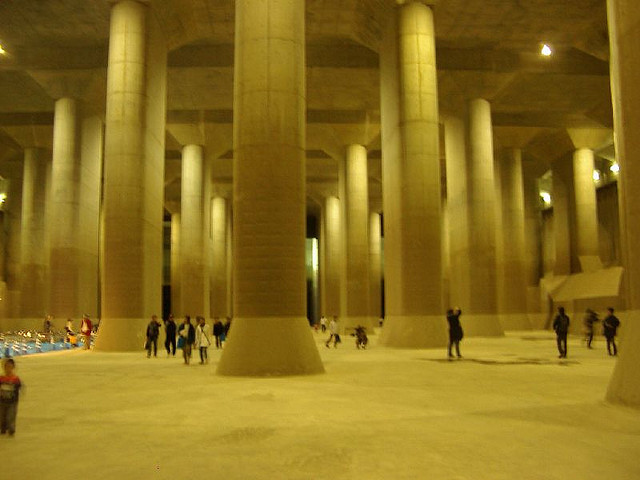
Flood water from the city’s drainage systems is collected through the tunnels and runs into the silos, which act as flow regulators. From there the water is channeled into the flood chamber. Once the water in the flood chamber reaches a certain level, four turbines powered by Boeing 737-sized jet engines pump the water out of the chamber at a combined rate of 200 cubic metres (53 000 gallons) per second, releasing it into the Edo river at a point where the river has the capacity to carry the water into the ocean without further flooding.

The Metropolitan Area Outer Underground Discharge system was built to handle flooding from monsoon-season typhoons, not storm surges from the ocean, and has been used over 70 times, says Takashi Komiyama, head of the pump station. He adds that the system has proven itself effective, reducing damage in terms of the number of homes and area flooded by two-thirds.
Sources: Amusing Planet; The Adventourist; Photo credit




